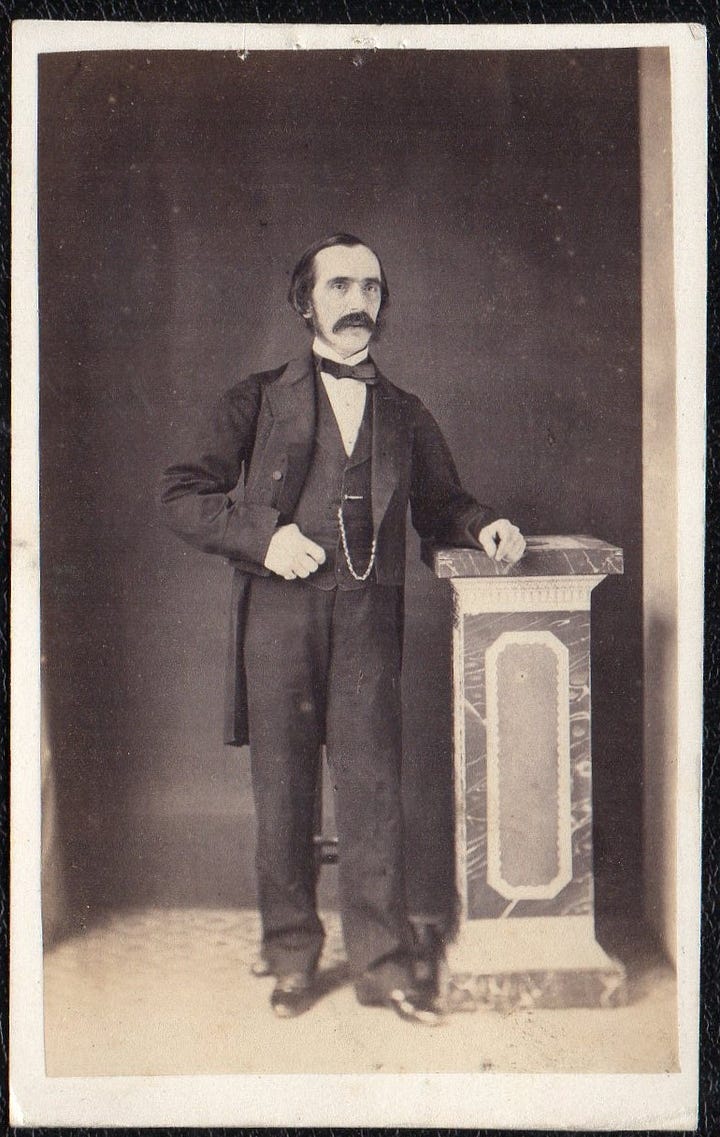
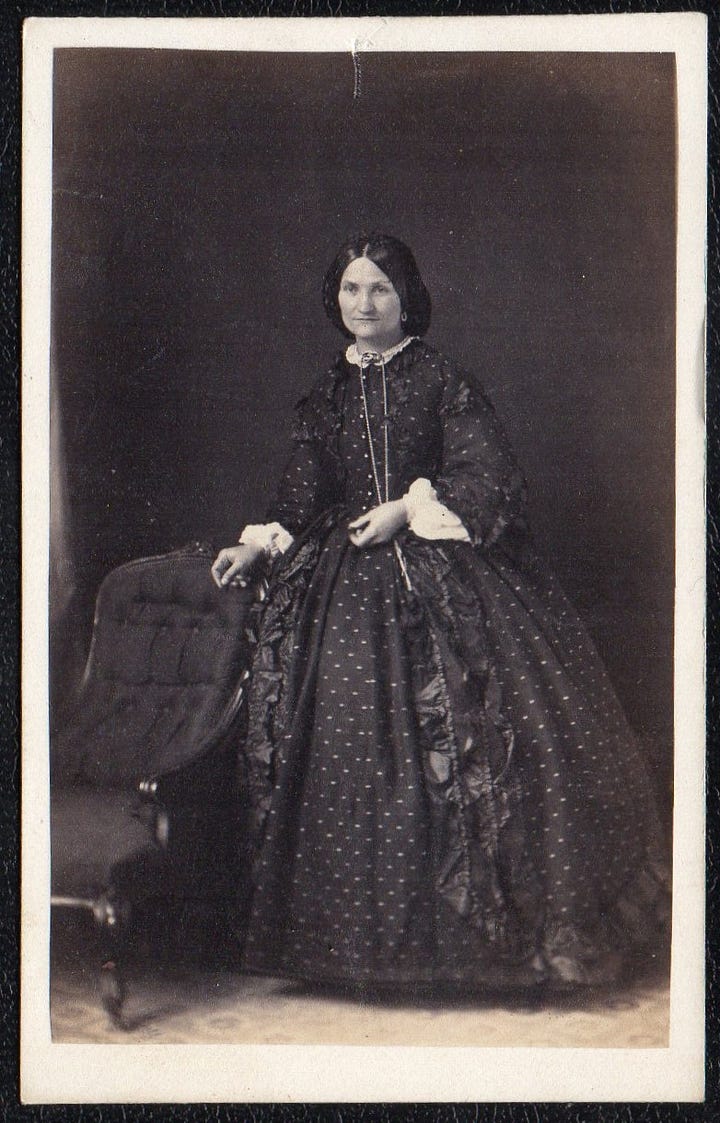
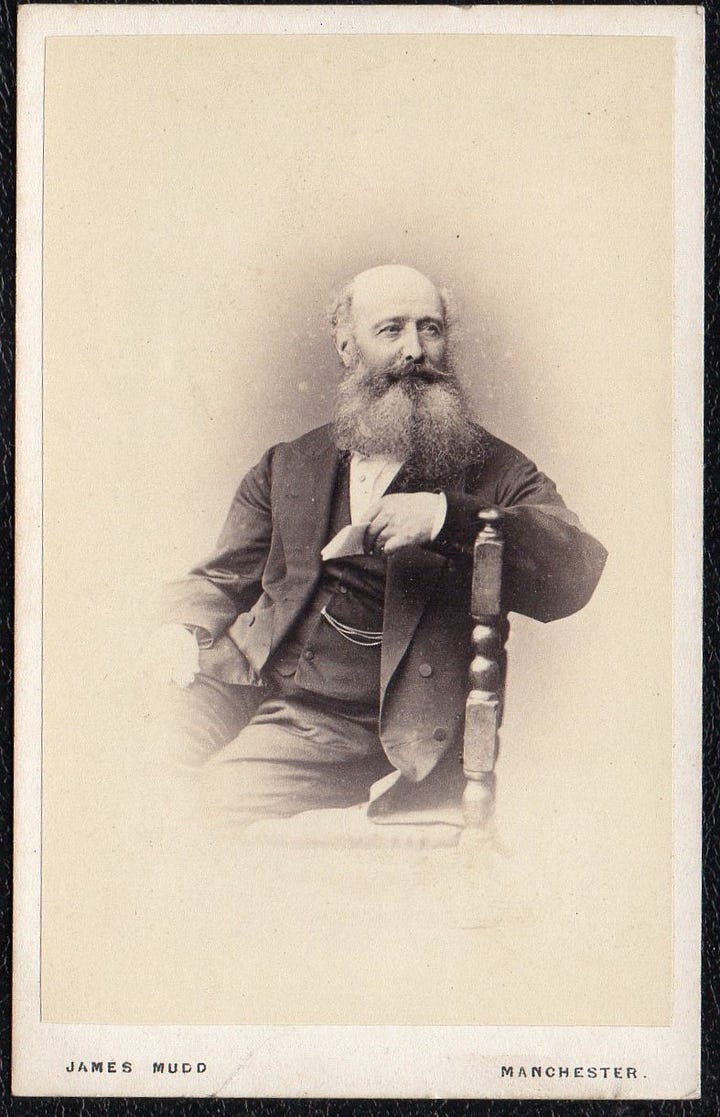
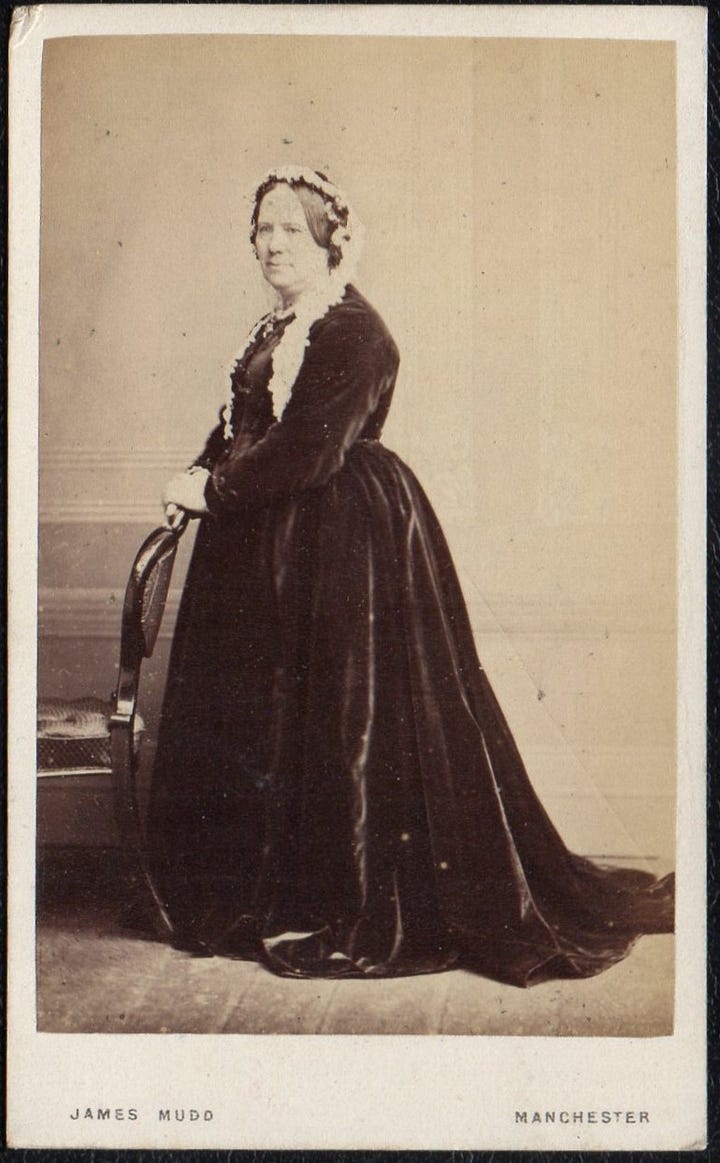
===============
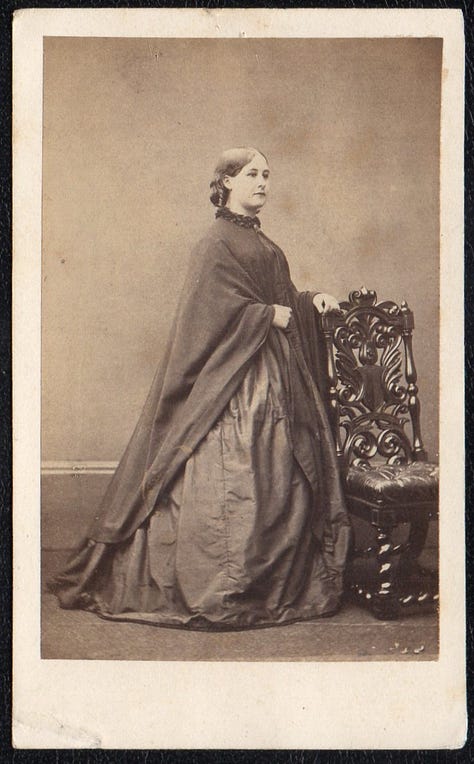
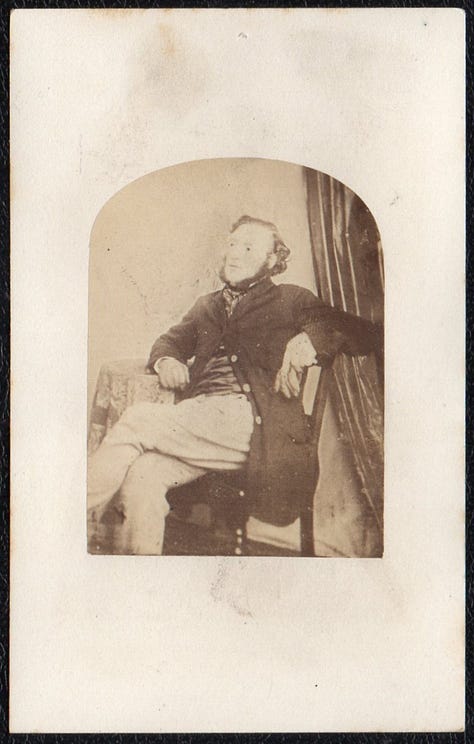
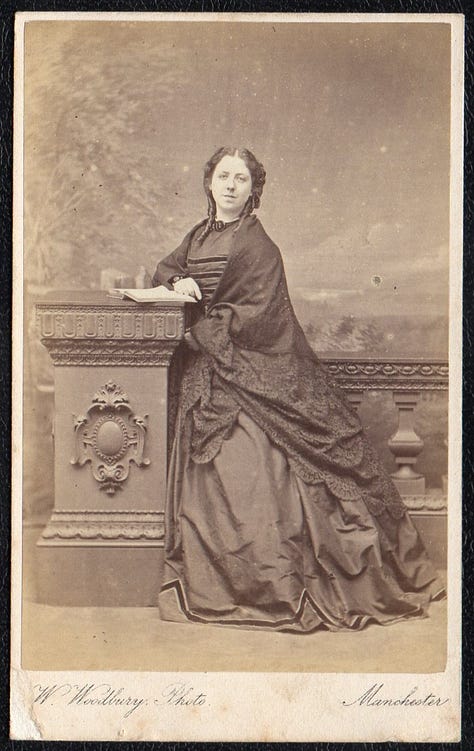
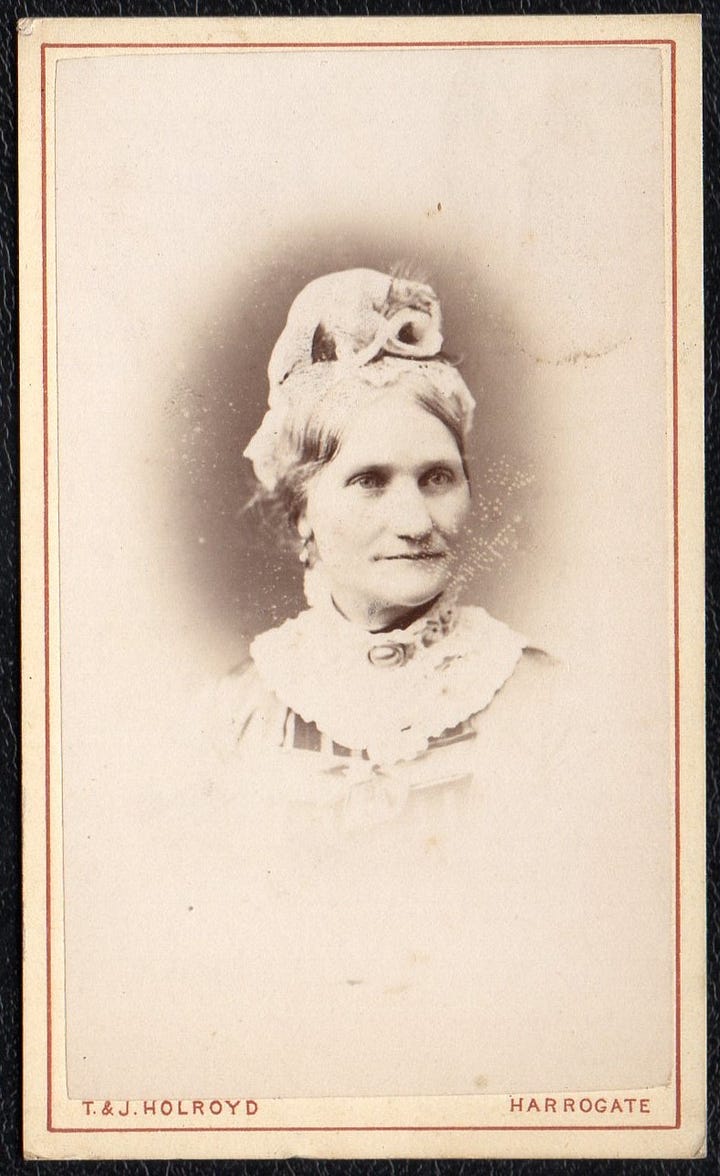
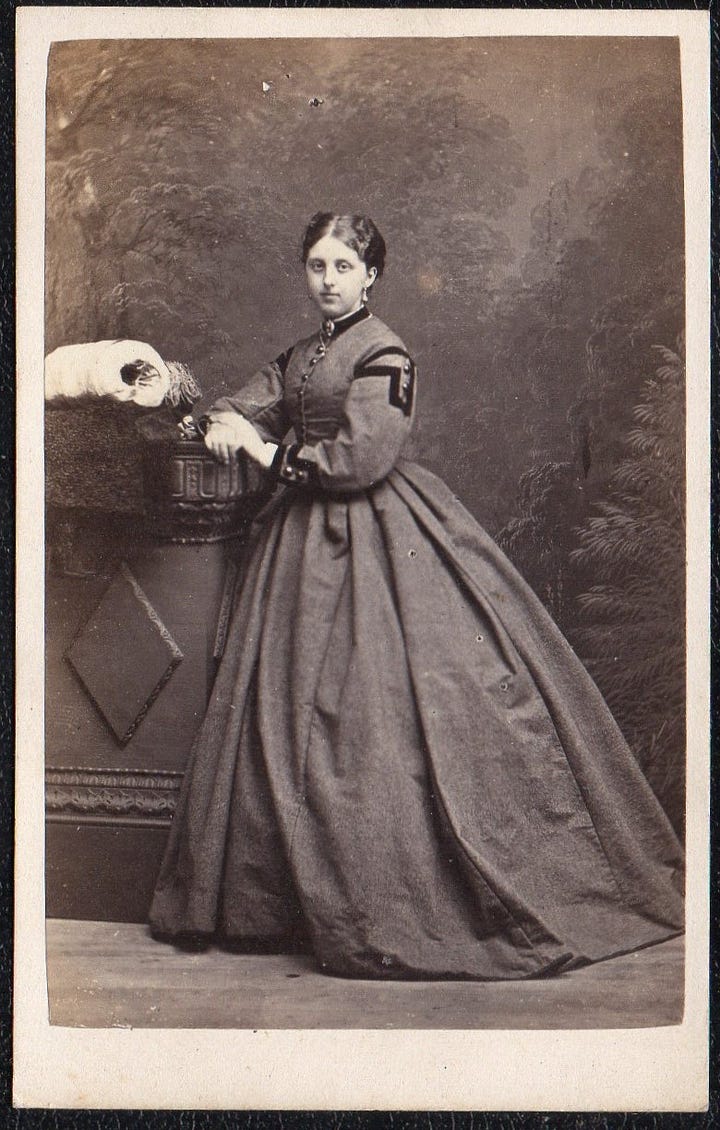
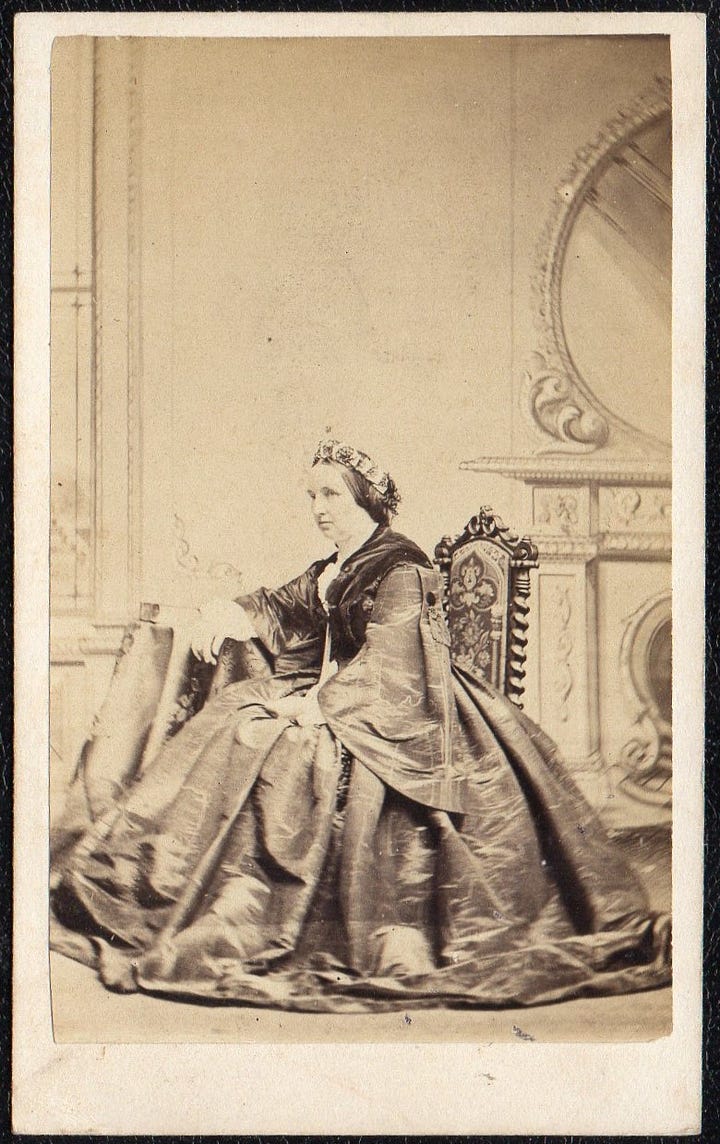
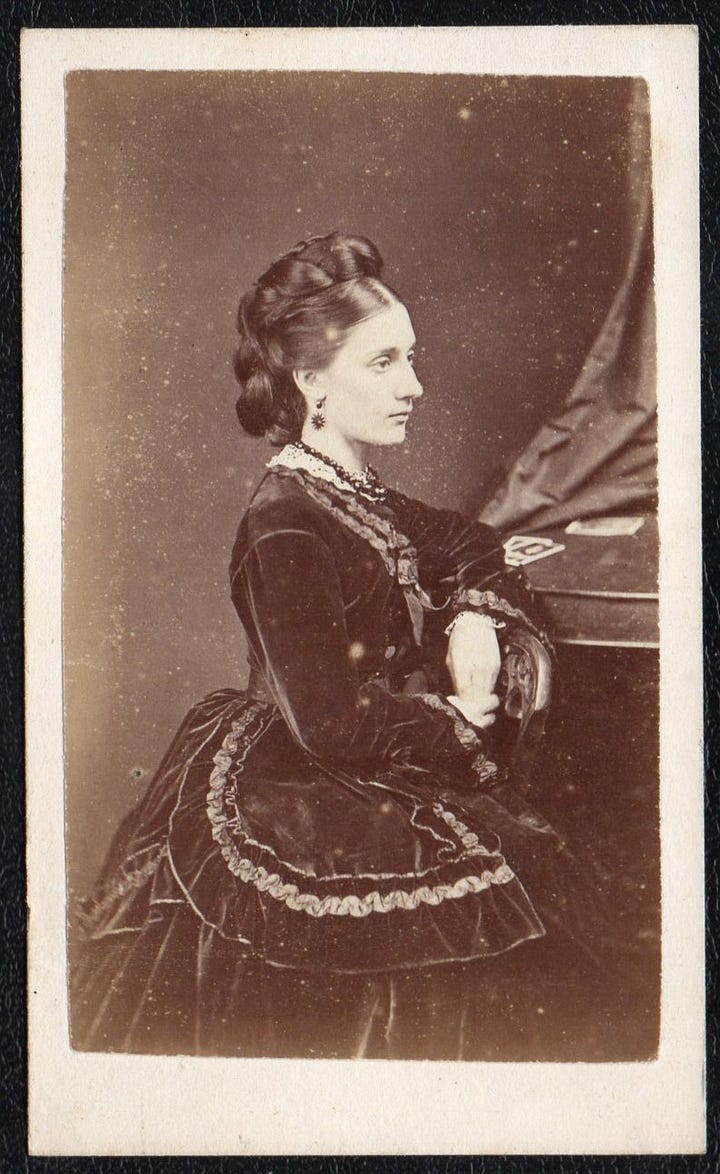
Some recently found photographs
of Karl Pearson’s family
A recent eBay “find” has resulted in the purchase of a Victorian cartes de visite (CDV) album which was put together by Thomas William Killick (xx), cousin of Karl Pearson (“KP”, 1857-1936). Many of these images show KP’s family; others relate to the family of John Charles Dollman (1851-1934), the famous painter. Most of the sitters come from around Hove and Brighton, which is where Killick lived, although KP’s immediate family came from London, Hull, and Crambe near York (Bibby 2013). One wonders whether other Killick memorabilia are on the market now or could be soon.
The eBay vendor was selling each CDV separately, thus breaking up the collection. This is common in the trade and is understandable commercially while damaging to historical integrity. He also kept no record of provenance and appears to have been unaware of Karl Pearson’s eminence despite the fact that at least two of the images (of KP’s parents) are already in the public domain. As a result, the selling-price may have been less than it otherwise would have been.
This paper presents all CDV images in this collection which show KP’s family, including one which may be of KP himself. Appendix 1 lists all xx images in the collection with name and address of photographer, approximate date of photograph and other relevant information[1]. Appendix 2 presents pen-portraits of selected sitters in the collection. Appendix 3 gives a partial family tree[2].
Figures A1-Ax: KP’s father, mother, brother and sister, and one image that may be of KP.
A. Karl Pearson’s immediate family
KP’s immediate known family consisted of his parents William and Fanny née Smith, an older brother Arthur, and a younger sister Amy. All these are represented in the CDV collection (see Figures A1-Ax)[3]. Two secret sibs are unrepresented. These are a previously unknown brother born in May 1860 who died in infancy and an illegitimate half-brother Frederick Mockett (1849-xx) whom William kept in touch with for the rest of his life and whom Karl corresponded with after his father’s death[4].
Figures B1-Ax: KP’s Bielby family
B Karl Pearson’s Bielby family
KP’s grandmother was born Elizabeth xxx Bielby/Beilby, a name which came from a village of that name near Crambe, which is where William was born.
Figures C1-Cx: Other Pearsons
C Other Pearsons in the collection
Figures D1-
D The Smiths
PEARSON/11/1/16/72: Letters from Arthur Beilby Pearson to Fanny Pearson. (n.d.). Retrieved May 1, 2023, from https://archives.ucl.ac.uk/CalmView/Record.aspx?src=CalmView.Catalog&id=PEARSON%2F11%2F1%2F16%2F72
Include
In January 1874 a letter to Fanny from Arthur in Cambridge refers to “exchanging photos with his mother, Amy and Karl” (UCL archives). Could these photos be among those in this album? (Earlier, in Spring 1870 Arthur wrote from the sanatorium at Rugby where he was being treated for measles, suggesting a photograph album for Karl's 13th birthday.)
1863-1895
384 letters from ABP to Fanny were found divided into six bundles covering date periods. The letters have been described below in these groups.
Letters covering the period December 1863 - July 1870, and comprises a letter from Arthur written at Christmas 1863, a letter dated May 1866 enclosing "heart's-ease" (Viola tricolor, now dried), letters from September 1869 on his first impressions of the town of Rugby, a letter recounting all that happened after Fanny left him at Rugby Station, about his early days at Rugby School and his hopes to get on academically and socially, on his admittance to the choir and success in a Latin composition test, thanks for packages and money received, about football at Rugby being compulsory and "like a fight", on being excused from football following a letter from his parents, his general success in classes, on experience of the "hall-scrummage" and winning the "Macbeth Prize" (award of a Shakespeare in two volumes with the school crest), on December examinations, on returning to school at the end of January 1870, on resolving to "do what is kind and right for the future" with Karl and suggesting a photograph album for Karl's birthday, writing from the sanatorium where he is treated for measles, on starting music lessons at begining of the summer term in May 1870, letter on 21 June 1870 after staying with his parents at "The George", on summer examinations, and on coming second in his form at the end of the year.
Letters covering the period September 1870 - December 1871, and comprises letters from September 1870 on his return to Rugby School, on getting a "double-remove" (promoted two years), detailing his term accounts, becoming an associate of the Natural History Society, on taking up botany and mathematics as extra subjects, informs that he is tenth in his form in November 1870, on settling back in to his room after the Christmas holiday, on the comfort of receiving the family's letters, on his first experience of calling "fag" in February 1871, encloses as diagram of his study, on his confirmation, on their respective trips to the International Exhibition in London, letter from 4 June 1871 on coming out fourth in his form, on working at examinations, a letter from 8 September 1871 on his trip to France, on concerns about exercising the authority of a sixth former, on writing a history of Rugby and sending it to the Routledge Annual competition, on his examinations and extra subjects chosen in November 1871, about length of time to stay in the sixth form and best chances of getting an exhibition, letter in December on Prizes he might get, on examinations and cancellation of the end of term concert.
Letters covering the period February 1872 - July 1873, on getting through his "calling over" week, on his troubles with most of the other older sixth-formers, on being "one of the few hard workers" in the school and being "snubbed and despised for 'swotting'", on visiting Richard Rowland Bloxam's home and the many prize antiques there, on the number and difficulty of the midsummer exams, on returning to school in September 1872 and hopes to try for an exhibition that academic year, on being elected a full member of the Natural History Society for work in the meteorological department, on a sermon at the school chapel to commemorate Founder's Day, about controversy surrounding publication of letters by the Headmaster Dr Henry Hayman in <i>The Times</i> and <i>Daily News</i>, on concerns that he is not learning well under Hayman, on trying for the Medal Examination in Spring 1873, hoping to holiday with Fanny and Amy in Easter, on spending a week at Newmarket with Mr Gee in May, on the Shah's progress through Rugby, his participation in "speech day", and on his preparation for and achievement of an Exhibition.
Letters covering the period August 1873 - January 1882, on a trip to Scotland with Karl in August 1873, outburst at his father (William Pearson) in defence of Fanny whilst they were on holiday with Karl at Whitby, on a summer visit to Cambridge with his father, on seeing Karl (who was studying in Hitchin with Mr Hensley) and his depressed demeanour, on his first few days at Trinity Hall, Cambridge, meeting other lodgers and describing his room, enclosing details of his expenditure and hopes for a scholarship, describing his average day comprising lectures, rowing, chapel, study and mealtimes, the impressive union building, on hoping for a first class mark in his Classical Tripos, his matriculation, walked to Girton College "a desolate, forsaken looking place", letter in January 1874 on his room in Trinity Hall and furniture valuation, exchanging photos with his mother, Amy and Karl, on desire to stay with Classics and then be eligible for a Law Studentship, on Karl's need for society outside college, on starting the new year in September and "meanness" of scholarships, his view that there is more to the nocturnal alarms at Merton Hall than "rats" (see W Pearson's letters in PEARSON/11/1/16/65), news of his trip to Ely with Karl and of Merton Hall, describing the conferment of degrees at the "knave-house", letter in March 1875 on fears that Karl is exhausting himself under Charles Taylor at Merton and will go "stale" before his Tripos begins the following year, congratulating his mother on arranging their move to a new house, on his training for rowing, letter in November 1876 with thanks for birthday gifts and on feeling little change at turning 21, letters in August 1877 describing his travels from Lucerne to Venice, letter dated 24 December 1881 describing Christmas in Naples and further travel itinerary, postcards from Messina and Palermo, and effusive praise of Rome.
Letters covering the period October 1885 - December 1889, and comprises letters from Arthur and Amy's (his wife) cottage in Northwold, on their trips to Norfolk, Cornwall, Aldeburgh, on concern in autumn 1887 for Fanny's physical and mental well-being suggesting a holiday together in the Riviera, letters from Italy in April - June 1888 mainly from the San-Remo Riviera, letters dated December 1888 to May 1889 describe Arthur and Amy's sea voyages through the Mediterranean and details of their sojourns in various countries, particularly in Egypt where they stopped from 29 December 1888 to April 1889, a letter in the summer 1889 on the death of Aunt Thies, and reassuring Fanny about his kidneys.
Letters covering the period January 1890 - November 1895, and comprises letters in January 1890 giving his postal address in Tenerife over the winter, on the rough voyage from Plymouth to Tenerife, desribing the scene at Puerto Orotara, Tenerife, describing how their days are spent, a letter in April on getting flu enclosing a message from Amy about holy week in Tenerife, letters from Eastbourne (undated but probably 1891 or 1892), letters in the summer of 1892 on his trip to Norway, letters from "The British Club" in Biarritz in March 1893 including thanks to Fanny for a letter congratulating Arthur and Amy on their eighth anniversary, on looking at Sandleford Priory as a potential home, on preparing a law book with notes on the Sale of Goods Act (published as A Commentary on the Sale of Goods Act, 1893: With Illustrative Cases and..., London: Sweet and Maxwell, 1894), on possible new information about his grandfather Thomas Pearson, letters in 1895 about family visits, entertaining guests, on letting Mrs Gee's house at Dewhurst, and a trip to Scotland.
Figures E1-Ex: The Killicks
D Killicks in the collection
Figures F1-Fx: Other relatives
F Other relatives
Appendix 1: A listing of images in the collection,
approximate date, name and address of photographer, etc..
Appendix 2: Pen-portraits of selected sitters in the collection.
?? alphabeyticaaly by surname?? With cross ref to App 1
Apendix 3: KP’s family tree, with images from Killick (xxx)
==============
Karl Pearson’s family:
new photos, new questions
Several “lives” of Karl Pearson (“KP”, 1857-1936) have been written by eminent biographers (Porter 2004; Magnello xxx) as well as by his equally famous son, Egon (Pearson 19xx). These lives refer to KP’s male relatives, especially his brother, father, and son. But female relatives tend to be ignored. The sole exceptions are his first wife Maria Sharpe (1851-1958), and his mother, Fanny Smith (1827-1905) to whom KP was very close.
By contrast with his father William (1822-1907), who is portrayed as “stern, egotistical” and “cool and remote”, Fanny presented herself as “vulnerable and mistreated”. The marriage was “troubled from the start”, and the boys were forced to take sides (Porter 2004:16-19)[5]. Sister Amy’s point of view is not recorded. Indeed, her very existence is ignored by Porter.
Two other events not mentioned in the literature were probably more relevant in contributing to the unhappiness of William and Fanny’s marriage. These are the apparent still-birth or infant death of an un-named infant son in 1860,[6] and an illegitimate son fathered by William in 1849[7]. Either one of these could seriously sour a marital relationship, even without any further aggravation from William, which undoubtedly occurred.
William very honourably kept in touch with his illegitimate son, Frederick Mockett, on whom he expended considerable amounts, and KP was evidently aware of the paternity allegation.[8] A further illegitimacy in the Pearson pedigree has also been alleged a good century before Frederick Mockett was born. This related to Thomas Pearson (1746-1831), William’s grandfather. According to Binnall (1941:xx), he broke with the Quaker faith, under pressure from his fiancée Elizabeth Hopkinson, who was said to be an Anglican and insisted that he should convert before their marriage. However, according to family tradition, this Thomas was the love-child of Nathaniel Cholmeley (1721-1791), the ‘master’ of Howsham Hall, just across the river from Crambe (Sarah Pearson: pers. comm.). This is confirmed in a letter to KP from his uncle Thomas Killick, according to which, Thomas “was coachman to Nathaniel Cholme (crossed out) Chumley of Howsham, and was also said to be his son. (He) married the housekeeper at Howsham who was a very beautiful woman” (Thomas Killick to KP; 1896sep18). The letter continues : “ …. I should like to know if we can lay claim to Cholmondley (sic) blood though with a bar sinister”.
Whatever the truth of these “bar sinister” rumours, they may have had an impact upon Fanny, the lack-lustre “girl from Hull”. In fact Fanny left Hull aged under two and from then on lived in Dalton and elsewhere in East London. As far as we know she never returned to Hull. KP’s father William (xx) by contrast often returned to his native Yorkshire, although links with his birthplace Crambe have until recently been obscured – see Bibby (2013).
Several cartes de visite of KP’s relatives have recently come to light via a photo album found on eBay. These include the following:
KP’s family tree, with images from Killick (xxx)
Maria
Fanny was the youngest of xx children
Other notable women in KP’s family include his sister Amy, sister-in-law Amy “May” Wilmott, and daughters Sigridxx and Helga.
StorageSite
UCL Special Collections
Level
Item
Reference Number
E S PEARSON/1/7/2/5
Title
Thomas Smith's Day Book
Date
1851-1860
Description
A day-book kept by Thomas Smith sr. (1782-1863), partly a book of accounts and partly a diary. Records business and household accounts such as wages paid to servants, and the activities of his family, particularly his son Thomas. Also notes the birth of several of his daughter Fanny's children (although not the birth of Karl Pearson in 1857).
Was there another secret sibling?
In 1853 WP married Fanny Smith of Hull. Their first son Arthur arrived on 2 November 1855 and is recorded in William’s “Day Book” (UCL 1/7/2/5) as “Fanny was brought to bed at 1am of a boy”. Karl was not so recorded. But a similar report “Fannie brought to bed of a boy” appears on 15 May 1860. This presumably relates to an otherwise-unrecorded brother who died soon after birth.
The marriage was fraught and unhappy; WP is portrayed as a “stern, egotistical Pater” (Porter 2005:29)

[1] Most CDVs show the photographer’s name and address on the verso as in Fig. x.x.; dates can be estimated from trading-periods which areoften short, and from the sitter’s estimated age. Many of the images presented here are new in the public domain; high-resolution copies are available on request. (The eBay vendor was good enough to provide me with images of the CDVs which he had sold before our purchase was finalised.)
[2] GEDCOM with over 1000 individuals available on request.
[3] In January 1874 a letter to Fanny from Arthur in Cambridge refers to “exchanging photos with his mother, Amy and Karl” Could these photos be among those in this album? (Earlier, in Spring 1870 Arthur wrote from the sanatorium at Rugby where he was being treated for measles, suggesting a photograph album for Karl's 13th birthday.) Source: UCL Archives.
PEARSON/11/1/16/72: Letters from Arthur Beilby Pearson to Fanny Pearson. (n.d.). Retrieved May 1, 2023, from https://archives.ucl.ac.uk/CalmView/Record.aspx?src=CalmView.Catalog&id=PEARSON%2F11%2F1%2F16%2F72
[4] See Bibby (2013) for details of KP’s family including evidence regarding his previously unknown brother who died in infancy and his illegitimate half-brother Frederick Mockett a.k.a. Pearson Mockett (1849-1920). William’s account books at UCL included payments marked “Mockett” including one marked “bastardy fee”. His “Day Book” (UCL 1/7/2/5) includes the note that “Fanny was brought to bed at 1am of a boy” when their first son Arthur arrived on 2 November 1855. The arrivals of Karl and Amy in 1857 and 1859 remained unrecorded. However on 15 May 1860, less than eight months after Amy’s birth, William reported “Fannie brought to bed of a boy”. This presumably related to an otherwise-unrecorded premature brother who did not survive. One wonders whether these family secrets of illegitimacy and child death were germane to the tense relationships in the Pearson household which biographers have commented on (Porter 2004).
[5] Fanny’s childhood friend Eliza Raines presented a rathe unsympathetic unsympathetic portrait of Fanny in a long letter to KP after Fanny and William had died: “If I am to write / truthfully I must say that after / she married she became very pettish. She had married a rising man determined to get on / his profession but she grudged / him the time necessary for such / study and complained that he /. never took her to any social / functions and indeed that all his evenings and late into / the night he was hard at work. / It was doubtless a little hard / for her, but then she could not possibly / have it both ways. This little / failing was the chief thing that / soured her but of course it was / inevitable that Mr Pearson must / burn the midnight oil and give / up social pleasures if he was to / succeed. She had very indifferent // health, indeed in her later years / she had much suffering, but of / course the time I have referred to was the early married life and / it somewhat marred her character. / She was I consider very self-centred / and warm-hearted & constant in / friendship. She was also refined / in her mind and tastes.” (Eliza Raines to KP, 1912aug12, UCL:PP and HP/8. Porter (2004:19) cites this letter but mis-spells the writer’s name; he also calls her a “Yorkshire neighbour” whereas Eliza and Fanny were in fact childhood friends in London.)
[6] William and Fanny married in December 1853 at St Dunstan’s, Stepney. Their first son Arthur arrived on 2 November 1855. William records this in his “Day Book” (UCL 1/7/2/5) as “Fanny was brought to bed at 1am of a boy”. Karl was not so recorded. But a similar report “Fannie brought to bed of a boy” appears on 15 May 1860. This presumably relates to an otherwise-unrecorded brother who died soon after birth.
[7] For the story of Frederick Mockett (1849-xx), see Bibby (2013)
[8] William’s account books at UCL show several payments marked “Mockett”. These are mainly for amounts of £5 or so. However on 4 August 1870, the day before Mockett’s 21st birthday, William withdrew £150 (worth about £15,000 at today’s rates). A similar coincidence occurred following Mockett’s marriage on 1 August 1875: on the 3rd William, withdrew £225. However, William’s ‘smoking gun’ was his payment on 1866may10 which he described in his own handwriting as “bastardy fee”.
Other items at UCL show that after WP died, KP was aware of this allegation of illegitimacy. For in 1907, FM (by then re-named Frederick Mockett Pearson) wrote addressing KP as “Dear Sir & Brother”, seeking part of WP’s legacy. KP provided short schrift: he did not question Moickett’s allegation of paternity; he merely stated that WP had made no provision for FM in his will: “The question of whether you are or are not the son of the late William Pearson is irrelevant. … He neither left any written information with respect to you, nor expressed any wish in his will or elsewhere about you. … I think if you understand this once and fully you will save yourself unnecessary trouble I am etc. KP” (KP to FM 1907dec19 UCL:PP and JB:CIMG1148). The tone of this letter indicates that KP already knew something of the Mockett affair – and he certainly was not going to let it interfere with his inheritance! (Bibby 2013).



